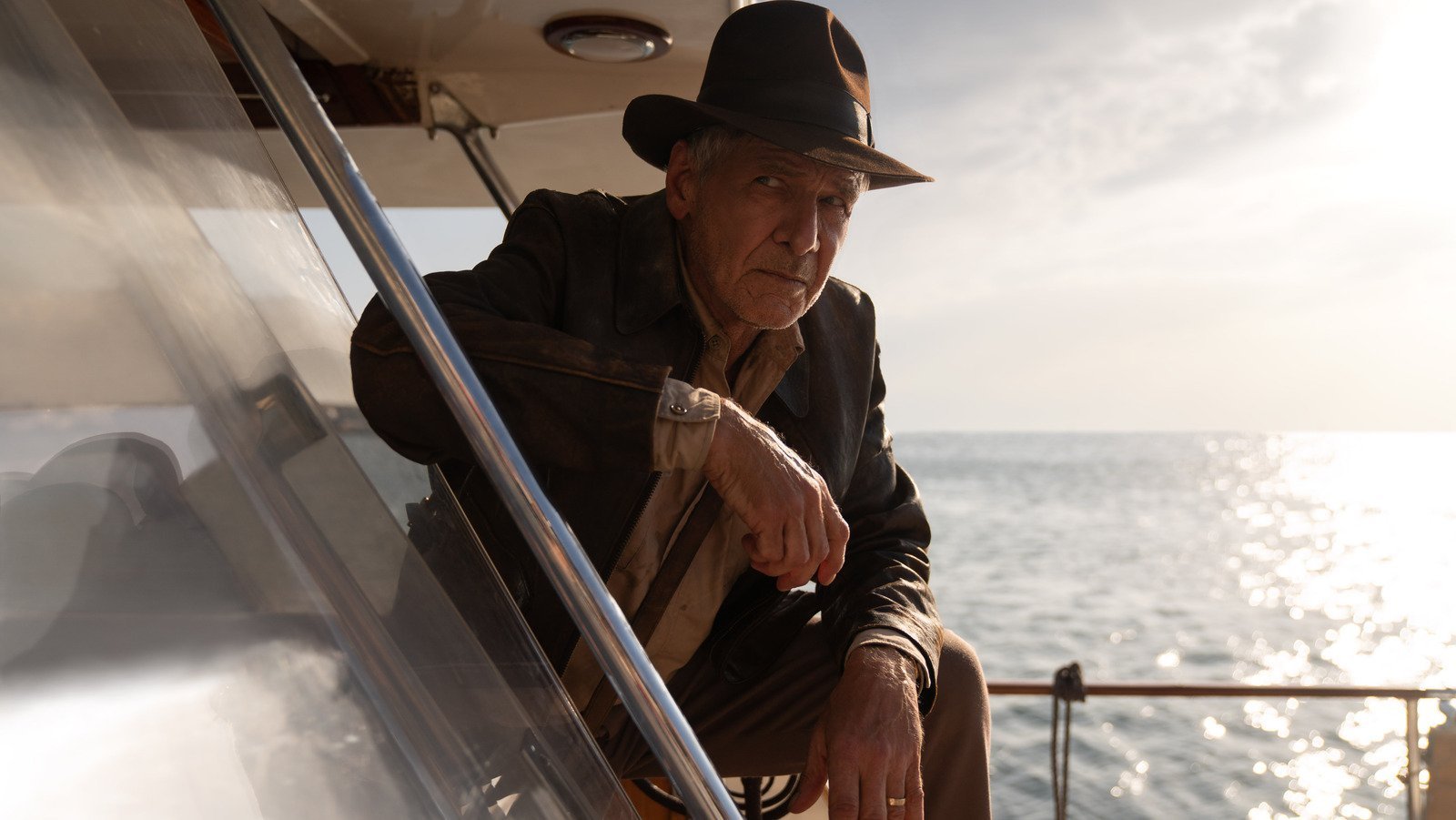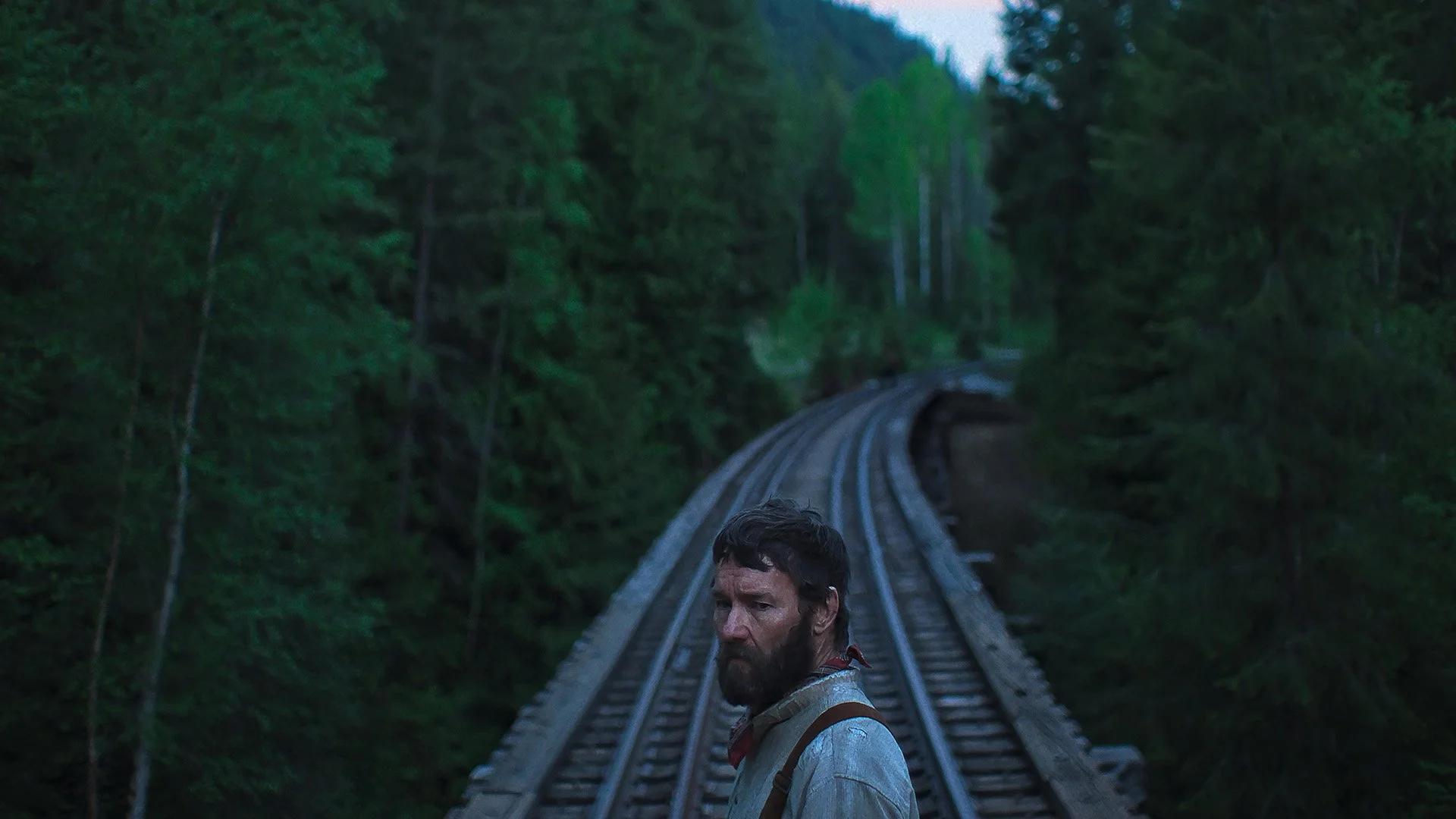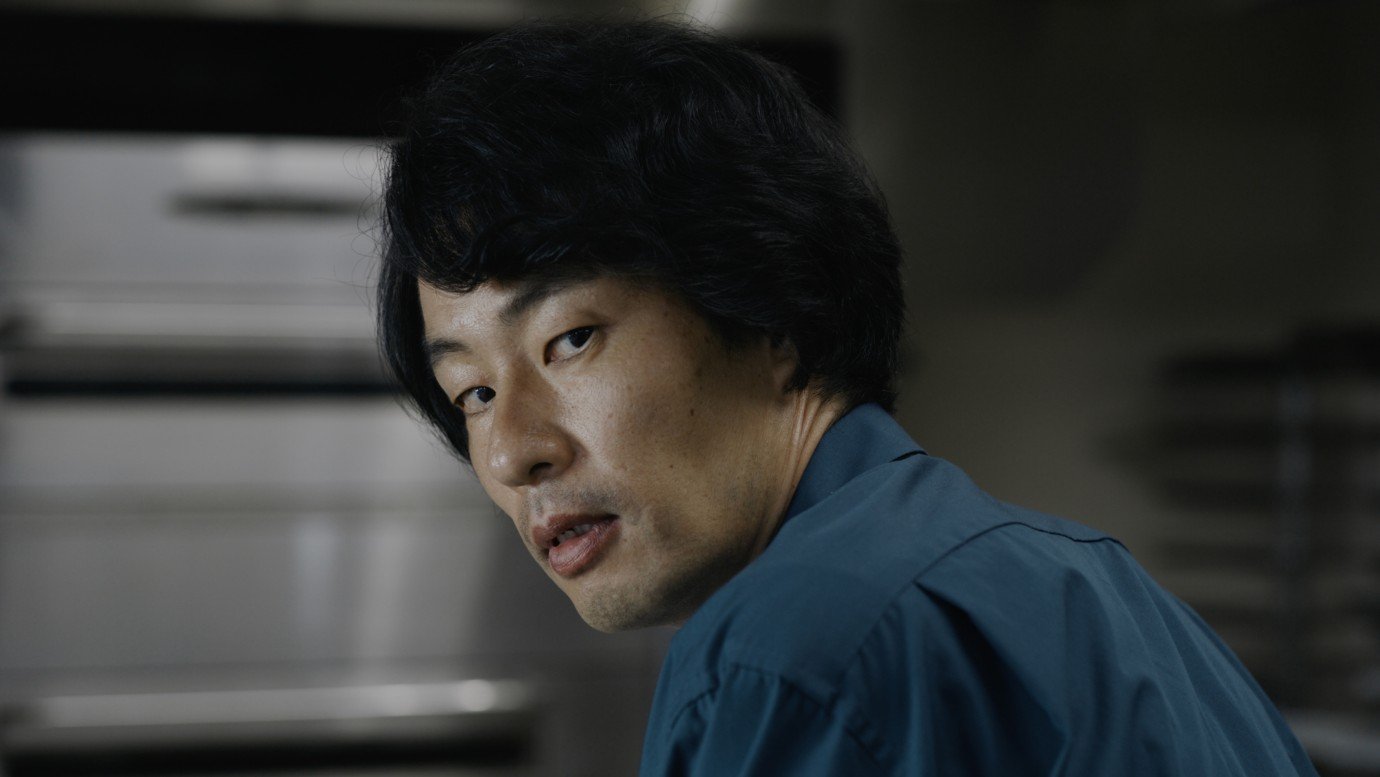Review: Indiana Jones and the Dial of Destiny (2023)
Indiana Jones and the Dial of Destiny is an adequate legacy sequel, but also a film divided between affection for the past and adherence to the present. The film is not a “diegetic reboot” or “requel,” like The Force Awakens, meant to extend the lifespan of the original films as well as kick-start a new storyline for the franchise. In spite of the injection of a new young heroine—Helena Shaw as played by Phoebe Waller-Bridge—and a plot about Harrison’s Ford’s tomb-raiding archeologist, now grown old, needing to rekindle his spirit, it is clear that this is a last kick at the can. One last quest. One last adventure. Unfortunately, Steven Spielberg and George Lucas didn’t join Ford for his last hurrah. James Mangold instead directs, but his style is less sure and sophisticated here in comparison to others works of his, such as Logan. Like all legacy sequels, the past looms large in Indiana Jones and the Dial of Destiny, in the faces of old characters and familiar tropes, and the significance of the film derives, in part, from the audience’s knowledge of and affection for the old stories, characters, and ways. At the same time, this is a Disney Lucasfilm legacy sequel, and so you can see attempts to correct the past and build new, supposedly more relevant hooks, to try to bring in new audiences. The result is a film stretched too far in more ways than one.
For starters, at two and a half hours, Indiana Jones and the Dial of Destiny is easily half an hour too long. Even 2008’s Indiana Jones and the Kingdom of the Crystal Skull clocked in at just over two hours. One part I wouldn’t trim is the beginning though. Dial of Destiny opens, like all Indiana Jones movies, with a first act that is largely self-contained, but that also plants the seeds for later narrative conflict and development. Abominable “deep-fake” technology, which Disney has already used with its Star Wars products, gives us a digital-Frankenstein version of a younger Harrison Ford, so the film can show Indy fighting Nazis during World War II on a train full of plundered relics and art. I know some, including my brothers, think it looks fairly convincing, but I was not convinced. The choice also reveals more than it should.
In the opening sequence, Indiana Jones tries to recover the Lance of Longinus, which is the spear that pierced Christ’s side. If you know the legend, you know that the object confers immortality, yet a cursed version of living forever. Is deep-fake technology cinema’s Spear of Destiny, cursing our favourite stars to live forever in scenes and films they never chose? At least Harrison Ford got to sign off on this and use his own voice, now very gravelly, which doesn’t entirely match the younger face.
In the midst of this enjoyable fight on a train speeding through the mountains, Indiana and his professor friend—Helena’s father Basil Shaw (played by Toby Jones)—discover another rare artifact from the past. Mads Mikkelsen’s German scientist, Jürgen Voller, possesses one half of the Antikythera or Dial of Destiny, a legendary clock-like device made by the famed ancient Greek inventor, Archimedes (c. 287–212 BC). The Dial, if restored to its lost half, is said to grant the power to rewrite history. In my view, the narrative jettisons a more intriguing MacGuffin for a lesser one, but what the Dial really offers is the chance to make thematic preoccupations with the past into features of the literal narrative.
Cut to the present, which is Moon Day in 1969, and Dr. Henry Jones Jr. lives alone, seems to drink too much, and has no friends or family. He now works at some city university in New York, fallen, I suppose, from Ivy League glory. As they did with Han Solo in The Force Awakens and with Luke Skywalker in The Last Jedi, Disney thinks they have to ruin happy endings to make new starts. I recognize that any number of Westerns have this pattern, but there are other ways to have an old hero return to the saddle, without making him either washed up, a drunk, or a deadbeat dad. But thinking outside of the box is not what this film does. The question is only whether to use the old Indy box or the new Disney box.
To return to the narrative, in 1969, the Nazi Voller now goes by the name of Dr. Schmidt. He is now an eminent and seemingly acceptable German-American scientist who has helped put American astronauts on the moon. We soon discover though that Voller still has his eyes on finding the Dial, with the help of some buzzcut crypto-fascists. With these villains in Dial of Destiny and with the First Order in the Star Wars sequels, Disney is making a habit of having their baddies represent the spectre of fascism returning, but in the form of wannabe hangers-on. If we are supposed to fear the return of fascism, we should be afraid of the folks who want to bring it back. Voller may have bigger plans, but his henchmen remain just henchmen, and their limited numbers never make the band a growing and ominous dark force, such as those that Indy had to battle, often alone, in both Raiders of the Lost Ark (1981) and The Last Crusade (1989). At least Boyd Holbrook contains enough elements of the acrobatic henchman trope—blonde hair, sadistic streak, physical agility—to bring some fun to the bad guys’ ranks. But we are never scared of any of these folks as we are in previously Indy adventures.
As the villains are introduced in an ungainly manner, Helena’s plot is stitched into the story via her father, who by 1969 has passed away but left Helena with deep archeological knowledge and dreams of stolen treasures. Helena says she’s in it for the cash, as she auctions off relics with the help of her young street-urchin companion, Teddy (Ethann Isidore). Sadly, Teddy is not written with the same pluck, wit, or joy as Ke Huy Quan’s Short Round, from Temple of Doom. (Given the success of Everything Everywhere All at Once, it is truly disappointing that Quan’s Short Round did not return for one last go with Indy.) Teddy’s presence in the plot remains crucial at a few points yet inorganic overall.
The rest of the supporting cast are awkwardly fit in here and there. It’s nice to see John Rhys-Davies’ Sallah again, but he’s underused, which makes it strange when Antonio Banderas shows up as a diver and supposedly old friend of Indiana Jones. As with Jim Broadbent’s dean or John Hurt’s professor in Kingdom of the Crystal Skull, the screenplay for Dial of Destiny attempts to suggest a deep relationship between Indy and various supporting characters the audience is meeting for the first time, because, whether due to death or age, the supporting cast from the original three movies can no longer play active roles.
Phoebe Waller-Bridge, who is not conventionally beautiful and thus might seem an odd choice to play an adventure co-lead, is better than I had feared. Throughout, Helena playfully antagonizes Indiana Jones, who’s her crusty godfather she hasn’t seen in years. In this way, Ford takes on Sean Connery’s elder position in The Last Crusade. Helena is convincingly witty and quick on her feet, but the storyline never makes it believable that she can also leap off motorbikes onto airplanes taking off, but such is modern blockbuster action. Everyone has an inner Jason Bourne, apparently.
Indy and Helena fight and cooperate and fight some more as they race to find the lost half of the Dial before the handful of still-Nazis can obtain it. With four screenwriters listed in the credits (David Keopp worked on the original draft and brothers Jez Butterworth and John-Henry Butterworth were brought in later on, while Mangold himself worked on rewrites), and with rumours about Waller-Bridge doing script work, it is no surprise that the film’s narrative lacks the clarity of the Spielberg films. The plot of Dial of Destiny falls far below the linear elegance of the quest in Raiders of the Lost Ark or the tight spirals of the invasion of the villain’s lair in Temple of Doom.
Of course, there are lots of fist fights and narrow escapes and banter and chases. The film is notably less mysterious, atmospheric, and scary though. We get one short sequence of creepy bugs and some skeletons and caves and a crypt, but not enough of them. What’s also missing is a solid scene of exposition, where the stakes and goals are carefully laid out, as Lucas and Spielberg generally do in their films. For this reason, the Dial never comes close to acquiring the trembling awe of the Ark or Grail. Even the Sankara stones in Temple of Doom or the crystal skulls in Crystal Skull are endowed with more potent mystery. I have other qualms, but I will give the film credit and say that it hits a fair number of the right notes. While the ending lacks certain features I would expect (I say more on this in our podcast roundtable), it does take a surprising direction that I think works.
In the end, however, the most pleasant surprise is that Indiana Jones and the Dial of Destiny is not noxiously offensive to the original material and its fans. This is more than a heartless cash grab. I never felt like the film expected that I should stand up and rejoice at its mere presence (as I said about Michael Keaton’s Batman in the junkyard that is The Flash). Here, the cast and filmmakers do some work to try to win me over.
One can only wonder how much Harrison Ford’s presence in Dial of Destiny, and his desire to give one last go with the character he loves, prevented the worst aspects of the Disney machine from taking over. A key scene at the end of the film does a lot to correct a few earlier character missteps. If I wasn’t wowed, I also did not leave annoyed and frustrated. I had a modest smile on my face at the last shot of Indy’s legendary fedora.
I saw Indiana Jones and the Dial of Destiny on a weekday matinee with my wife and our young boys and a scattering of seniors. It’s summer vacation and there were no kids in the audience but the ones raised by a cinephile. Not a good sign. The film asks the question, does the modern world need Indiana Jones? Sadly, our mostly empty theatre, the box office receipts, and portions of the film itself suggest that most of the world has moved on to other things, like the forever present of a flattened multiverse and little pictures on little screens. Nevertheless, for parts of Indiana Jones and the Dial of Destiny, I’m modestly grateful. The fifth Indiana Jones movie is not great, but, as my wife said, this was my boys’ only chance to ever see Harrison Ford play Indiana Jones on the big screen. And for that I can be grateful.
I’m leery about Dial of Destiny in other ways. I truly hope that Disney does not continue on in the hubristic manner of some Indy villain, attempting to control the future by forever reanimating the dead. Let the fedora of Indiana Jones rest among the tombs of cinema’s greats.
6 out of 10
Indiana Jones and the Dial of Destiny (USA, 2023)
Directed by James Mangold; written by Jez Butterworth & John-Henry Butterworth and David Koepp and James Mangold; starring Harrison Ford, Phoebe Waller-Bridge, Antonio Banderas, John Rhys-Davies, Toby Jones, Boyd Holbrook, Ethann Isidore, and Mads Mikkelsen.



Darren Aronofsky ultimately cannot manage the tone of this black comedy crime film.